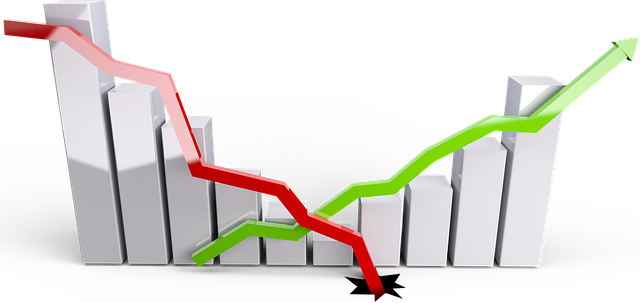
Mastering the Dragonfly Candlestick Pattern: Trading Insights and Tips
The Dragonfly Candlestick Pattern, also known as the dragonfly candle, is a powerful reversal signal used in technical analysis to predict potential price changes in the market. Traders use this pattern to identify bullish reversals and make informed decisions.
Table of Contents
In this guide, we’ll cover:
✔ What the Dragonfly Candlestick Pattern is
✔ How to identify and interpret it correctly
✔ The difference between bullish and bearish setups
✔ How to trade effectively using this pattern
What is the Dragonfly Candlestick Pattern?
The Dragonfly Doji Candlestick is a type of Doji pattern known as the dragonfly doji candle, which signals potential trend reversals in financial markets. This pattern occurs when the open and close prices of an asset are nearly identical, indicating a potential market reversal.
Definition and Structure of the Dragonfly Doji
The Dragonfly Doji is a unique candlestick pattern that forms when the opening, high, and closing prices of an asset are identical or nearly identical. This pattern is characterized by a long lower shadow, which indicates significant selling pressure during the period. However, the close near the open price shows that buyers managed to absorb this selling and push the price back up. The Dragonfly Doji is considered a neutral pattern, providing both continuation and reversal signals depending on its context within a trend.
Key Features of a Dragonfly Doji:
✅ Small or no upper shadow
✅ Long lower wick (showing strong buying pressure)
✅ Open, Close, and High prices are almost the same
This pattern indicates that sellers controlled the market initially, but buyers pushed the price back up to close near the opening level. It often suggests a potential uptrend reversal.
📌 Where It Appears:
- At the bottom of a downtrend → Bullish signal
- At the top of an uptrend → Potential bearish weakness
How to Identify and Interpret the Dragonfly Doji Candlestick
The Dragonfly Candlestick can be an important signal for traders when it appears in key support and resistance levels, often indicating a potential price reversal.
1️⃣ Bullish Dragonfly Doji (Reversal Signal)
📌 Occurs at the end of a downtrend
📌 Suggests a shift from selling to buying pressure
📌 Can indicate a potential upward move
The closing price relative to the opening price in a Dragonfly Doji can indicate market sentiment, such as weakness from bears in a red Dragonfly Doji or strength from bulls in a green Doji, signaling potential reversals in market trends.
✔ How to Confirm a Bullish Reversal:
✅ Look for high trading volume
✅ Check for support levels nearby
✅ Wait for bullish confirmation on the next candle
2️⃣ Bearish Dragonfly Doji (Trend Weakness)
📌 Occurs at the top of an uptrend
📌 Suggests that bulls failed to maintain the uptrend
📌 Indicates a potential trend reversal or consolidation
The Dragonfly Doji is a powerful candlestick pattern that can signal price reversals, especially when it appears after a downtrend. It is crucial for traders to recognize this pattern to predict potential bullish reversals in the Forex market.
✔ How to Confirm a Bearish Move:
✅ Look for strong resistance levels
✅ Check if the next candle is bearish
✅ Use other indicators like RSI, MACD for confirmation
Understanding the Dragonfly Doji in Market Trends
The Dragonfly Doji can appear in various market trends, and its interpretation depends on the context in which it forms. Understanding the Dragonfly Doji in different market trends is crucial for traders to make informed decisions.
The Dragonfly Doji in an Uptrend
When a Dragonfly Doji appears in an uptrend, it can indicate a potential price decline. The long lower shadow shows that sellers were able to exert significant pressure, and the close near the open price suggests that buyers were unable to sustain the upward momentum. Confirmation is required for the bearish reversal to be confirmed. If the price rises instead, the reversal signal is invalidated.
The Dragonfly Doji in a Downtrend
When a Dragonfly Doji appears in a downtrend, it suggests a price rise might be on the horizon. The long lower shadow indicates that sellers dominated early on, but buyers managed to push the price back to the open. This action signals increased buying pressure and a possible upward reversal. Confirmation is required for the reversal signal to be strengthened.
How to Trade Using the Dragonfly Doji Pattern
The Dragonfly Doji can be a highly effective trading signal when used correctly. Here’s how you can use the dragonfly doji and incorporate it into your trading strategy:
1️⃣ Bullish Entry Strategy
✅ Wait for confirmation: Enter long when the next candle closes above the Doji high.
✅ Stop-loss placement: Place stop-loss below the Doji low to minimize risk.
✅ Profit targets: Aim for previous resistance levels or a risk-reward ratio of at least 1:2.
🔹 Example: If the price forms a Dragonfly Doji near a strong support level, enter a buy trade when the price moves above the high of the Doji.
2️⃣ Bearish Entry Strategy
✅ Wait for confirmation: Enter short if the next candle closes below the Doji low.
✅ Stop-loss placement: Set a stop-loss above the Doji high.
✅ Profit targets: Look for previous support levels to exit trades.
🔹 Example: If the Dragonfly Doji forms at the top of an uptrend, it could indicate trend exhaustion and signal a potential shorting opportunity.
Best Time to Trade using the Dragonfly Doji
The best time to trade using the Dragonfly Doji is after a pullback in an uptrend or a downtrend. Traders watch for the pattern to develop after a pullback in an uptrend because it signals a change in purchasing pressure and a potential end of the pullback. In a downtrend, the Dragonfly Doji can indicate a potential bullish reversal, and traders can enter long positions if the next candle rises and closes above the Dragonfly Doji’s close.
Dragonfly Doji vs. Other Candlestick Patterns
| Pattern | Shape | Signal | Trading Strategy |
|---|---|---|---|
| Dragonfly Doji | Long lower wick, no upper wick | Bullish reversal | Buy on breakout above high |
| Gravestone Doji | Long upper wick, no lower wick | Bearish reversal | Sell below low |
| Hammer | Small body, long lower wick | Bullish reversal | Buy confirmation |
| Shooting Star | Small body, long upper wick | Bearish reversal | Sell confirmation |
📌 Key Difference: The Dragonfly Doji has no real body, whereas the Hammer and Shooting Star have small bodies.
Common Mistakes to Avoid
🚨 Trading without confirmation – Always wait for follow-up price action before entering trades.
🚨 Ignoring market context – Check for support and resistance levels before making decisions.
🚨 Not using stop-loss orders – Always use risk management techniques to protect your capital.
Final Thoughts: Is the Dragonfly Candlestick Pattern Reliable?
✔ Yes! The Dragonfly Doji Candlestick Pattern is an effective reversal signal when used with confirmation and other technical indicators.
✔ It’s best suited for swing traders, day traders, and technical analysts looking for trend reversals.
✔ To maximize success, combine it with support/resistance analysis, RSI, and moving averages.
📌 Next Steps:
➡ Test this strategy on a demo account before trading live.
➡ Look for high-probability setups in strong support/resistance zones.
➡ Keep learning and refining your candlestick trading strategies.
🚀 Ready to trade the Dragonfly Doji? Start applying it to your charts today!







Comments: 0